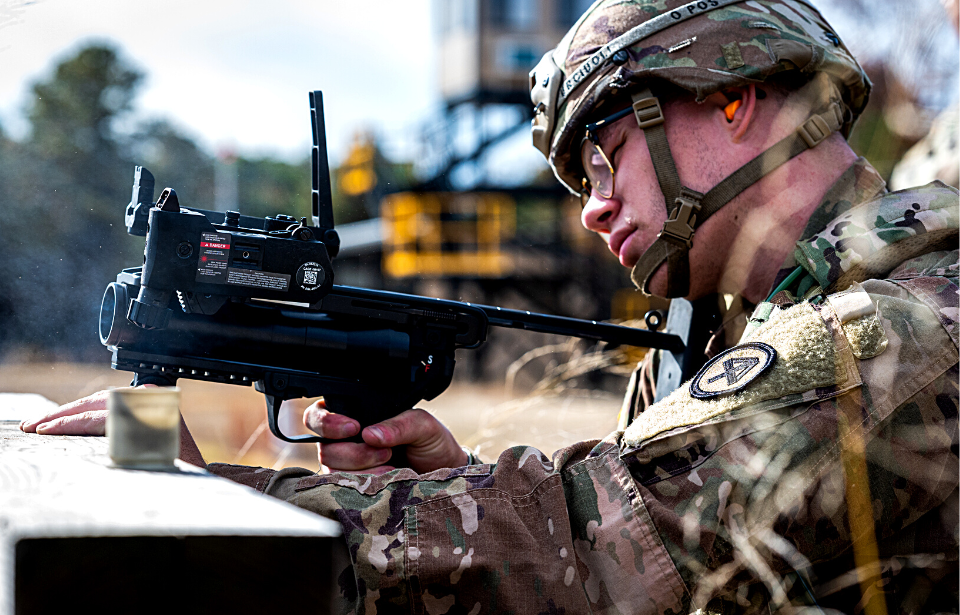The M320 grenade launcher is one of the newest in the US military’s arsenal. It was created with the intention of having an equally effective standalone and mounted grenade launcher, and has successfully improved upon the M203’s already impressive record.
Looking for a replacement for the M203 and M79 grenade launchers
The M203 grenade launcher was introduced in 1969 and has been used by the US military since the early 1970s. It was designed as an under-barrel device to be attached to an assault rifle and uses the same high-low propulsion system as the M79 grenade launcher to keep recoil low while firing heavy 40 mm projectile grenades. The M203, however, has less accuracy and a shorter range than the M79.
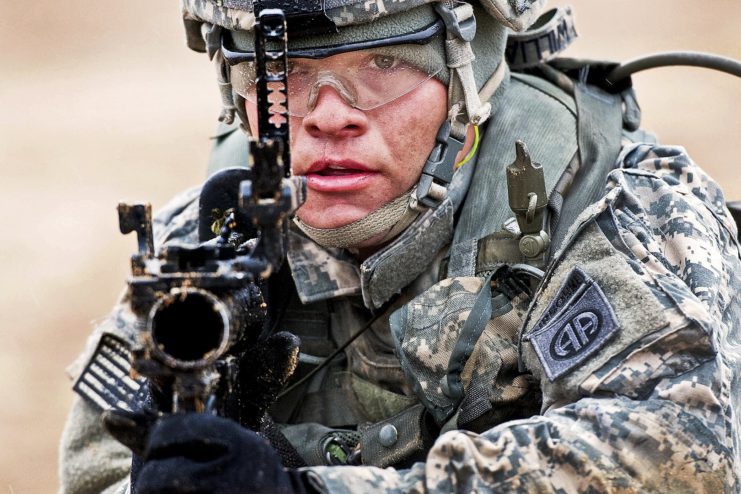
Although the M203 has the capability of operating independently, it’s almost never used in its standalone configuration. Instead, when a standalone grenade launcher is required, the M79 was still the superior choice, as it performs comparatively better when used without a rifle.
The M203 has served for over 40 years, but is slowly being phased out, as the US military upgrades its weaponry. The intention was to replace both the M203 and the M79 with a grenade launcher capable of maintaining the same high-low propulsion system of the previous, but with improvements in almost every other department. The M320 fulfills those needs.
Introduction of the M320 grenade launcher
The new design for the M320 grenade launcher was provided by Heckler & Koch, who won the contract in 2005. It was based on the AG36, but sported a number of changes. The M320 was adopted by the US Army in 2008 and the Marine Corps in 2017; the Army ordered 71,000 units, while the Marines ordered 7,000. It’s also used by the US Air Force. The 82nd Airborne Division became the first to use the weapon, with the M320 seeing its debut in the field in 2009.
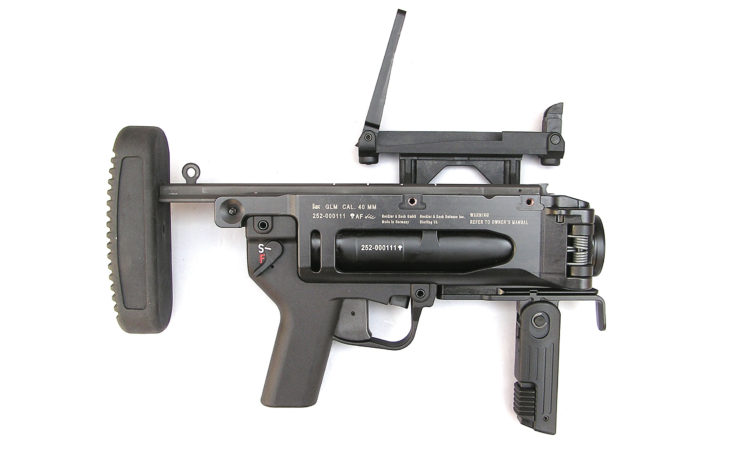
The physical design of the M320 resembles that of an Uzi submachine gun, but is more compact in size and shape. It’s much more versatile than the M203 and the M79, as it doesn’t favor being employed as a standalone weapon or mounted onto another – it can work effectively as both.
Like its predecessor, the M320 fires 40 mm grenades, including explosive, smoke and illumination grenades, but can also be equipped with more powerful grenade types. This include the Raytheon Pike precision-guided mini missile. It maintains the same range of the M203 at 150 meters at a point target and 350 meters at an area target, but has increased accuracy that makes it more reliable.
The M320 grenade launcher offers many improvements
The M320 grenade launcher boasts major improvements. To begin with, it’s been upgraded to a side-loading mechanism, which makes the breach clearly visible and thus makes loading a lot easier; the barrel on the M320 swings out for loading, instead of the forward-sliding ‘pump’ barrel that the M203 used. This allows soldiers to load the M320 with non-lethal rounds of ammunition.
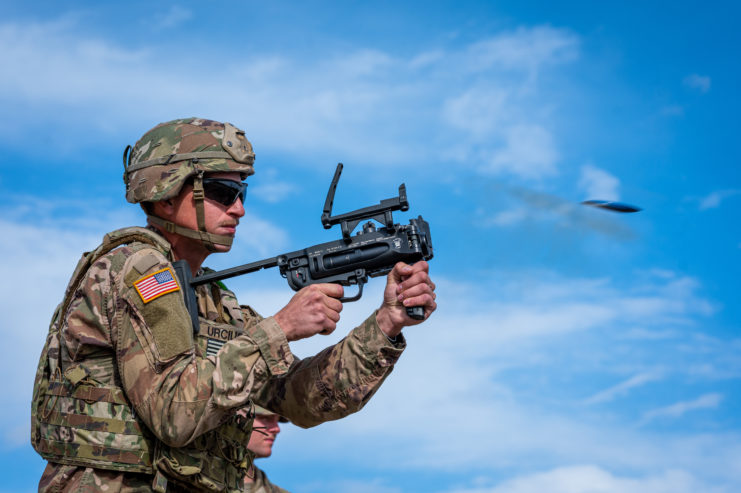
Additionally, the M320 has a folding foregrip that can be tucked away when not needed. The foregrip is intended to be used when the grenade launcher is working separately from an assault rifle, but is versatile in that it can also serve as a forward vertical grip if the M320 is mounted under a barrel. The weapon also has a detachable stock for when it’s mounted.
A notable difference between the M320 and the M203 are the weapons’ sights. The M203’s were attached separately and were inconvenient in that they had to be re-zeroed every time they were used. The M320’s sights are more advanced, located on the side of the unit, and can be used with a laser rangefinder that allows for use at night.
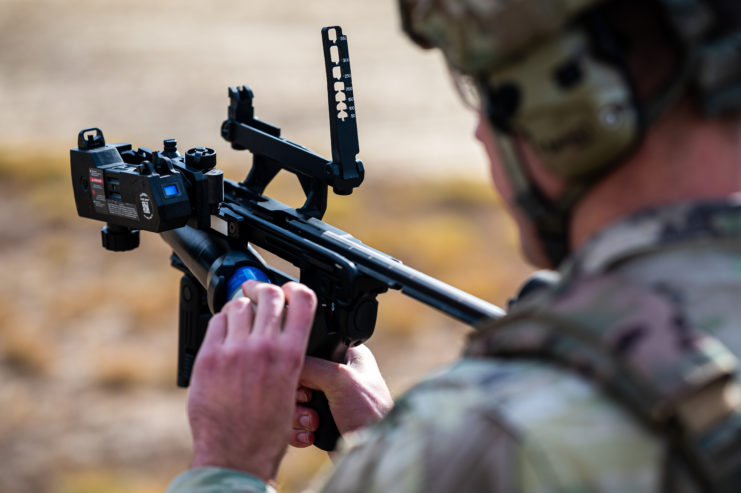
The leaf sight on the M320 flips up when needed and uses an integrated electronic sighting system that lets the user dial in the range to determine whether they are on target. By doing so, the sight makes the grenade launcher more accurate in a variety of conditions and makes wielding it much easier for less-versed grenadiers.
Unlike the M203’s single-action trigger, the M320 boasts a double-action trigger, which offers ambidextrous safety. This allows the user to have more control over the launcher and offers more reliability when needing to handle misfires or unloading.
The M320 grenade launcher has its drawbacks
Despite all of these improvements with the M320, the grenade launcher still has its flaws. Like many found in new or improved weapons, these were discovered through use in the field. First, the M320 was supposed to be lighter than the M203, but it actually came in slightly heavier. The M203 weighs only three pounds, whereas the M320 comes in at 3.3 pounds. While the difference may seem small, weight is an important factor for troops who are already overloaded with heavy equipment.
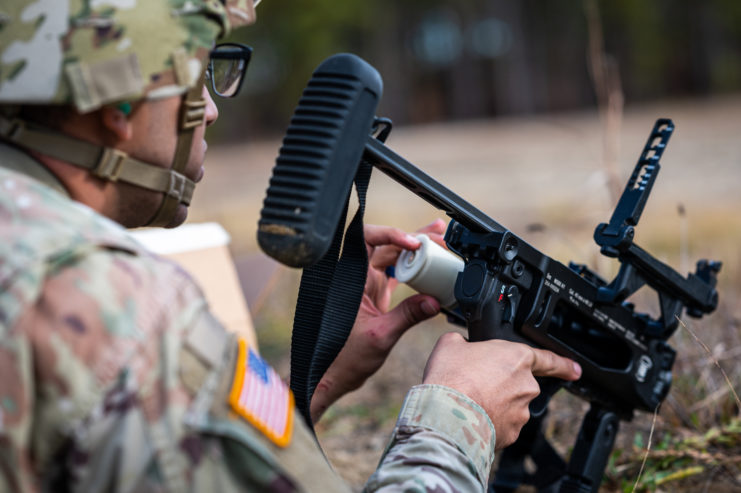
The new leaf sight on the M320 also has its drawbacks, as troops have complained that it’s too fragile for hard use during combat. When using the M203, they never had to worry about breaking the sight because it was so little.
Accessories, accessories, accessories
When the M320 grenade launcher is used as a standalone weapon, the single-point attachment causes the weapon to swing around and get in the way for many users. As such, troops requested some sort of holster be created to help carry it when not mounted to an assault rifle.
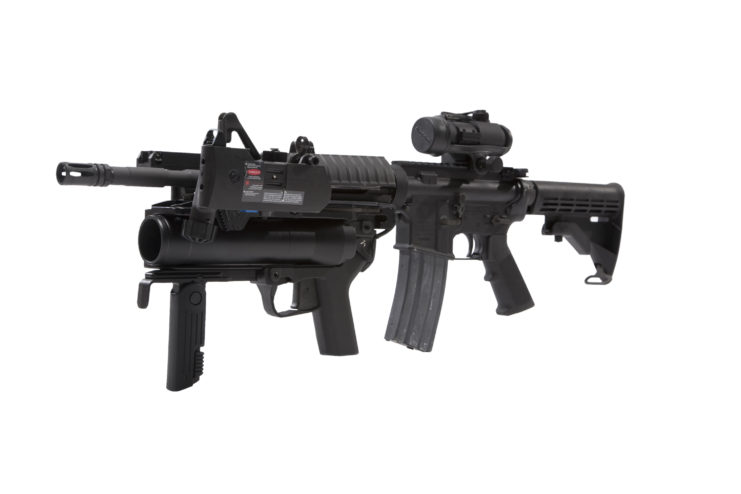
The Army heard this complaint and responded by launching the M320GL Holster Soldier Enhancement Program (SEP). To prevent any further wrinkles, the M320GL SEP employed a “try-before-you-buy” system that provided holsters from three different vendors. The chosen holster is intended to address the issue of the fragile leaf sight, as the sight will be tucked away.
More from us: The M1 Garand was ‘The Greatest Battle Implement Ever Devised’
All in all, the US military has spent approximately $270 million on the M320 and its accessories over the years. However, the improvements certainly outweigh the drawbacks when it comes to the grenade launcher, and it’s likely the weapon will continue to serve the Armed Forces for years to come.
